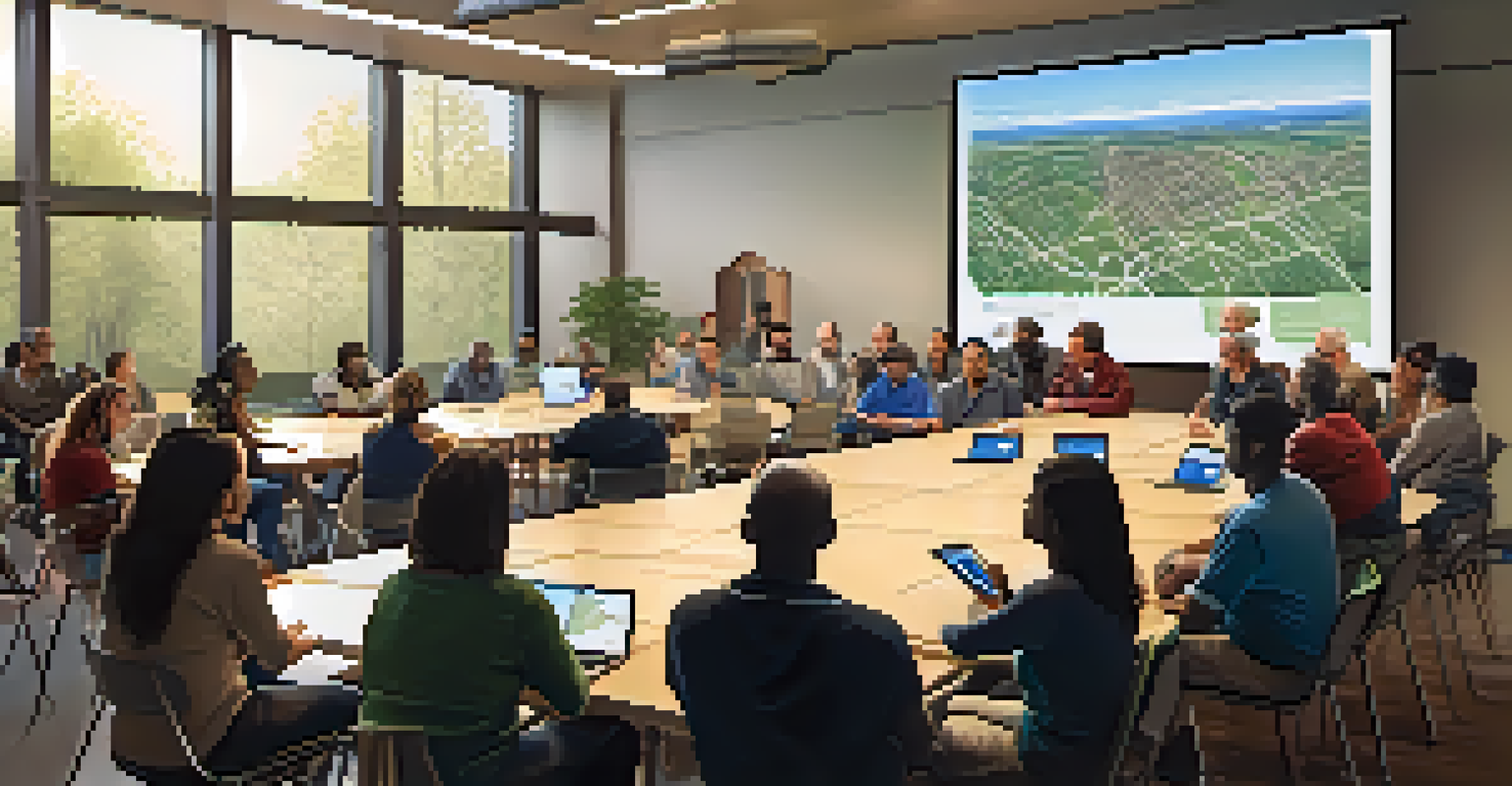Impact of Technology on San Jose's Urban Planning Initiatives

Understanding Urban Planning in San Jose
Urban planning in San Jose is vital for managing the city's growth and development. It involves creating frameworks for land use, transportation, and housing to ensure a balanced and sustainable urban environment. As the city expands, effective urban planning helps address challenges such as traffic congestion, housing shortages, and environmental sustainability.
Urban planning should be approached with a holistic view, considering the social, environmental, and economic aspects of the community.
The city's planning initiatives are designed to enhance the quality of life for residents while accommodating its diverse population. This requires a comprehensive understanding of community needs and future trends. By integrating technology, San Jose aims to create smarter, more efficient urban spaces that cater to the evolving demands of its citizens.
Ultimately, urban planning is about more than just buildings and roads; it's about fostering a vibrant community where people can thrive. As technology plays an increasingly crucial role, the possibility of creating a more connected and accessible San Jose becomes a tangible reality.
The Role of Data in Urban Planning
Data collection and analysis are at the heart of modern urban planning. In San Jose, planners utilize data from various sources, including traffic patterns, population demographics, and environmental factors, to inform their decisions. This data-driven approach allows city officials to identify trends and make proactive adjustments to urban initiatives.

For example, by analyzing traffic data, planners can pinpoint congestion hotspots and develop targeted solutions such as improved public transit routes or new bike lanes. Additionally, data can help assess the impact of proposed developments on local communities, ensuring that growth is sustainable and equitable.
Data Drives Urban Planning
In San Jose, data collection and analysis are essential for informed decision-making in urban planning.
Moreover, technology enables real-time data collection, providing planners with up-to-date insights that can lead to quicker and more informed decision-making. This agility is crucial in a rapidly changing urban landscape, where the needs of the community can shift overnight.
Smart Cities: The Future of San Jose
San Jose is embracing the concept of smart cities, where technology and data integrate seamlessly into urban planning. This vision includes the use of sensors, IoT devices, and digital platforms to enhance city services and improve the quality of life. From smart traffic lights that optimize flow to connected public transportation systems, the possibilities are vast.
The future of our cities depends on how well we integrate technology with urban planning and community engagement.
By implementing smart technologies, San Jose can better manage resources, reduce energy consumption, and improve public safety. For instance, smart waste management systems can monitor bin levels and optimize collection routes, reducing costs and environmental impact. These innovations contribute to a cleaner, more efficient city.
Furthermore, a smart city approach fosters community engagement by providing residents with access to information and tools. Through mobile apps and online platforms, citizens can participate in planning processes, report issues, and receive real-time updates about their neighborhoods.
Community Engagement Through Technology
Effective urban planning requires active participation from the community. In San Jose, technology plays a pivotal role in facilitating this engagement. Tools like online surveys, interactive mapping, and social media platforms enable residents to voice their opinions and contribute to the planning process.
For instance, the city may host virtual town hall meetings to discuss upcoming projects, allowing residents to provide feedback from the comfort of their homes. This approach not only increases participation but also helps planners gather diverse perspectives that might otherwise be overlooked.
Embracing Smart City Concepts
San Jose is integrating technology and smart solutions to enhance city services and improve residents' quality of life.
Moreover, technology helps build trust between residents and city officials. When people see their input reflected in planning decisions, they feel more invested in their community, fostering a sense of ownership and collaboration.
Sustainability Initiatives and Technology
Sustainability is a key focus of San Jose's urban planning initiatives, and technology is a powerful ally in this endeavor. From renewable energy solutions to green building practices, tech-driven strategies can significantly reduce the city's carbon footprint. For example, smart building technologies can optimize energy use, leading to lower utility costs and a smaller environmental impact.
Additionally, technology can support sustainable transportation options, such as electric vehicle charging stations and bike-sharing programs. By making eco-friendly alternatives more accessible, the city encourages residents to adopt greener lifestyles, contributing to a healthier planet.
San Jose's commitment to sustainability is further exemplified by its focus on urban green spaces. Using GIS (Geographic Information Systems) technology, planners can identify areas for parks and greenways, enhancing urban biodiversity and improving the quality of life for residents.
Challenges of Integrating Technology in Urban Planning
While the benefits of technology in urban planning are clear, there are also challenges to consider. One major concern is the digital divide, where not all residents have equal access to technology and the internet. This disparity can lead to unequal participation in planning processes, with marginalized communities potentially being left out.
Additionally, the rapid pace of technological change can make it difficult for city planners to keep up. New tools and platforms emerge constantly, and ensuring that these are effectively integrated into existing systems requires continuous training and adaptation. Planners must balance innovation with practicality to create lasting solutions.
Community Engagement is Crucial
Active participation from residents, facilitated by technology, is vital for effective urban planning in San Jose.
Finally, data privacy and security are paramount concerns. As cities collect more data to inform their planning efforts, they must also protect residents' personal information. Striking this balance is essential to building trust and ensuring that technology serves the community responsibly.
The Future of Urban Planning in San Jose
Looking ahead, the future of urban planning in San Jose is bright, driven by the ongoing integration of technology. As the city continues to evolve, planners will rely on innovative solutions that address emerging challenges while enhancing the quality of life for all residents. The focus on smart city initiatives and community engagement will shape a more connected urban environment.
Furthermore, ongoing collaboration between city officials, technology providers, and the community will be essential. By working together, stakeholders can harness the power of technology to create a more sustainable, equitable, and vibrant San Jose.

Ultimately, the impact of technology on urban planning is about creating spaces where people can thrive. As San Jose embraces this transformative journey, it sets a powerful example for other cities looking to leverage technology for positive change.